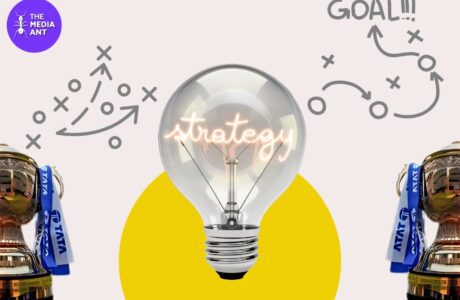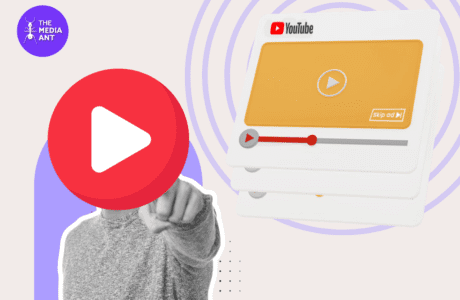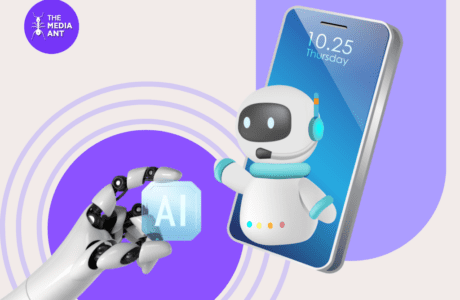Forget silly cat videos and quizzes – the real action for professionals happens on LinkedIn. It’s not just a place to polish your resume and share company news. LinkedIn is a hidden treasure trove for reaching high-powered decision-makers, industry leaders, and potential team members.
Enter LinkedIn Advertising – your secret weapon for cutting through the clutter and placing your content directly in front of the most qualified leads you could hope for. Buckle up, because we’re about to dive into the different types of LinkedIn Ads, their benefits, and best practices for creating ads that convert, generate leads, and skyrocket your business to the top.
Let’s unlock the full potential of this networking giant and turn your LinkedIn strategy from “meh” to “holy moley, that’s a ton of qualified leads!”
What is LinkedIn Advertising?
LinkedIn Advertising features paid promotional opportunities that businesses and professionals can use on LinkedIn for targeted audiences. As the world’s leading business networking site, LinkedIn provides a unique platform for advertisers to connect with business audiences, making it particularly effective for B2B marketing. The platform offers several advertising formats, including sponsored content, sponsored InMail, display ads, and dynamic ads. LinkedIn advertising solutions enable businesses to target their ads based on factors such as job title, industry type, company size, and more, for accurate audience segmentation This targeting, in combination with the platform’s vast user base, makes LinkedIn a valuable tool for brands looking to increase visibility, generate leads, and establish meaningful connections within the professional community
How LinkedIn Advertising Works?
LinkedIn advertising works through LinkedIn Campaign Manager, where advertisers launch campaigns by setting goals such as brand awareness or lead generation. By using sophisticated targeting techniques, companies can tailor their audience based on business criteria such as job title, industry, and skills.
Advertisers then choose from a variety of ad types, including sponsored content, sponsored inmail, text ads, and dynamic ads, tailoring their approach to specific campaign goals.Creative elements, such as visuals and ad copy, are carefully crafted to resonate with LinkedIn’s professional audience.
Setting the budget and bidding criteria takes place before the campaign is launched, after which ads appear in users’ feeds or their inboxes. Continuous analytics through Campaign Manager enables advertisers to monitor key metrics and make data-driven optimizations for better performance. LinkedIn’s emphasis on professional networking makes it a fantastic platform for connecting with decision-makers and industry professionals, providing a unique platform for precise targeting and engagement.
Types of Linkedin Ads
LinkedIn offers a variety of different advertising formats that can be used in its advertising. For building a successful LinkedIn Ads campaign, the key is to find the best ad format for every goal.
1. Sponsored Content
Sponsored Content is a prominent ad format on LinkedIn that seamlessly integrates into users’ feeds. These native ads can take the form of single-image ads, carousel ads, or video ads, making them versatile for various content types. The primary objective of Sponsored Content is to enhance brand visibility, engage the target audience, and promote content assets like blog posts, whitepapers, or case studies. By appearing directly in users’ feeds, Sponsored Content has the potential to capture attention and encourage interaction, fostering a connection between the brand and its audience.
2. Sponsored InMail
Sponsored InMail is a personalized messaging solution that allows advertisers to send targeted messages directly to the LinkedIn inboxes of their chosen audience. This ad format is particularly effective for one-to-one communication, making it ideal for lead generation, event promotions, and personalized outreach. Sponsored InMail messages can include text, links, and call-to-action buttons, providing a direct channel for brands to engage with prospects. This format ensures that messages are delivered to a user’s inbox when they are most likely to be active, maximizing the chances of interaction.
3. Text Ads
Text Ads on LinkedIn are concise and cost-effective advertisements that appear on the right-hand side of the desktop interface. Comprising a headline, a brief description, and a small image, Text Ads are designed for simplicity and quick consumption. They are well-suited for campaigns focused on driving website traffic, promoting specific offers, or generating leads. Text Ads allow advertisers to reach a broad audience with a clear and straightforward message, making them an efficient choice for businesses looking to make a direct impact.
4. Dynamic Ads
Dynamic Ads are highly personalized advertisements that leverage LinkedIn member data to create a tailored experience. These ads incorporate elements such as profile pictures, job titles, and company names to resonate with individual users. Dynamic Ads are particularly effective for increasing engagement, promoting job opportunities, and encouraging users to follow a LinkedIn page. The personalized touch enhances the relevance of the ads, capturing the attention of the audience and driving them to take desired actions.
How to Set Up a LinkedIn Ad Campaign
Here’s a guide to setting up a successful campaign:
1. Define Your Goals and Target Audience:
What do you want to achieve? Brand awareness, website traffic, lead generation, or event registrations?
Who is your ideal customer? Job title, industry, company size, skills, etc. Be as specific as possible.
2. Choose the Right Campaign Format:
Sponsored Content: Promote your organic content to a wider audience.
Text Ads: Short, targeted ads displayed on the LinkedIn feed and sidebar.
Display Ads: Banner ads on various placements within LinkedIn.
Dynamic Ads: Personalized ads showcasing your products or services.
3. Craft Compelling Ad Copy:
Headline: Grab attention with a clear and concise value proposition.
Body Text: Highlight the benefits of your offering and address your target audience’s pain points.
Call to Action: Tell users what you want them to do next, like visiting your website or downloading a white paper.
4. Optimize Your Bidding and Budget:
Set a realistic budget based on your goals and campaign duration.
Choose the right bidding strategy: Cost-per-click (CPC), cost-per-impression (CPM), or cost-per-lead (CPL).
Monitor your campaign performance and adjust your bids as needed.
5. Leverage LinkedIn Targeting Options:
Precise targeting: Job title, company, skills, demographics, etc.
Lookalike audiences: Reach users similar to your existing customer base.
Retargeting: Reconnect with website visitors or past leads.
Remember, success on LinkedIn advertising requires a strategic approach and continuous optimization. By following these steps and staying committed, you can reach your target audience and achieve your business goals through effective LinkedIn ad campaigns.
Benefits of LinkedIn Advertising
LinkedIn advertising boasts a unique set of advantages for reaching professionals and businesses, making it a valuable tool for B2B marketing. Here are some key benefits to consider:
1. Professional Audience
Unlike general social media platforms, LinkedIn connects you with a highly targeted audience of professionals, decision-makers, and influencers. You can pinpoint your ideal customers based on job titles, companies, industries, skills, and even alma maters. This ensures your message reaches the right people, maximizing your ad spend and campaign effectiveness.
2. Granular Targeting Options
LinkedIn’s targeting options go beyond basic demographics like age and location. You can target users based on their professional interests, groups they belong to, the content they engage with, and even their purchase history. This hyper-focused approach allows you to deliver highly relevant ads that resonate deeply with your target audience.
3. Unique Ad Formats
LinkedIn offers a variety of ad formats beyond banner ads. You can leverage Sponsored Content to promote your organic content, Text Ads for concise messaging, Dynamic Ads that personalize the ad experience for each user, and even InMail ads that appear directly in users’ message inbox for a more direct approach.
4. Increased Brand Credibility
Advertising on LinkedIn inherently builds trust and credibility for your brand. Being associated with a platform known for professionalism puts your business in a positive light and increases the likelihood of user engagement.
5. Lead Generation Powerhouse
LinkedIn is a lead generation goldmine. With features like Lead Gen Forms that capture user information directly within the ad, you can seamlessly convert interested users into qualified leads without them ever leaving the platform.
6. Cost-Effectiveness
While not necessarily the cheapest platform, LinkedIn’s laser-focused targeting ensures your ad spend reaches the right people, leading to a higher return on investment (ROI) compared to broader platforms.
7. Valuable Data and Insights
LinkedIn’s robust analytics provide valuable insights into your campaign performance. Track impressions, clicks, conversions, and other metrics to understand what’s working and what’s not, allowing you to optimize your campaigns for better results.
Best Practices for LinkedIn Advertising
Let’s understand the five best practices for success in LinkedIn advertising:
1. Target precisely and strategically
Go beyond demographics: Utilize LinkedIn’s unique targeting options like job titles, skills, company size, and even user groups.
Avoid over-targeting: Maintain a balance between reach and precision. Too narrow might limit potential leads, while too broad can dilute effectiveness.
Test and refine: Experiment with different targeting combinations and analyze data to identify the most effective ones.
2. Craft compelling and value-driven ad copy
Headlines: Grab attention with clear, concise statements that highlight the value proposition.
Body text: Address your audience’s pain points and showcase how your offering solves them.
Calls to action: Tell users what you want them to do next, using strong verbs like “Download”, “Sign Up”, or “Register”.
3. Leverage visuals effectively
High-quality images and videos: Choose visuals that are professional, relevant to your message, and appeal to your target audience.
Mobile-first approach: Ensure visuals look great and load quickly on mobile devices.
Test different formats: Experiment with various image sizes, video lengths, and formats to see what performs best.
4. Optimize your budget and bidding
Set realistic budgets: Base your spend on campaign goals and duration.
Choose the right bidding strategy: CPC for clicks, CPM for impressions, or CPL for leads.
Monitor and adjust: Track performance data and adjust bids regularly to improve campaign efficiency.
5. Analyze and optimize continuously
Utilize LinkedIn’s analytics tools: Track impressions, clicks, conversions, and other key metrics.
A/B test different elements: Headline, body copy, visuals, and calls to action to identify what resonates best.
Stay informed and adapt: Keep up with LinkedIn’s platform updates and adjust your strategies accordingly.
Conclusion
In conclusion, LinkedIn advertising is a powerful and versatile tool for businesses and professionals seeking to connect with a targeted audience in a professional context. With various ad types such as Sponsored Content, Sponsored InMail, Text Ads, and Dynamic Ads, advertisers can tailor their campaigns to specific goals, from brand awareness to lead generation. The benefits of LinkedIn advertising include precise professional targeting, B2B marketing opportunities, efficient lead generation, and the promotion of engaging content. To maximize success, it is crucial to follow best practices, such as defining clear objectives, creating compelling ad creative, and leveraging LinkedIn’s robust targeting options. By incorporating these strategies, businesses can unlock the full potential of LinkedIn advertising to reach, engage, and build meaningful connections within the professional community.
FAQs Related to LinkedIn Advertising
What are the 4 LinkedIn ad types?
LinkedIn offers four main types of advertising formats:
Sponsored Content: Native ads that appear in the LinkedIn feed.
Sponsored InMail: Personalized messages sent directly to users’ inboxes.
Text Ads: Small, concise ads displayed on the right side of the desktop interface.
Dynamic Ads: Highly personalized and targeted ads using member data.
Is LinkedIn an advertising platform?
Yes, LinkedIn is an advertising platform. It provides a variety of advertising solutions to businesses and professionals, allowing them to promote their products, services, and content to a targeted professional audience.
Is LinkedIn advertising free?
No, LinkedIn advertising is not free. While users can create and maintain personal profiles for free, advertising on the platform involves costs. Advertisers typically pay for their campaigns based on various models, including cost per click (CPC), cost per impression (CPM), or cost per send (for Sponsored InMail).
What type of marketing is LinkedIn?
LinkedIn primarily serves as a platform for B2B (business-to-business) marketing and professional networking. It is widely used for lead generation, brand building, thought leadership, and connecting with a professional audience. However, it can also be leveraged for B2C (business-to-consumer) marketing in certain industries.
What brands use LinkedIn?
Many brands across various industries use LinkedIn for marketing and professional networking. The platform is particularly popular among B2B brands, technology companies, financial services, and professional services. Well-known global brands, as well as smaller businesses, use LinkedIn to reach and engage with their target audience.
Are LinkedIn ads successful?
The success of LinkedIn ads depends on various factors, including campaign objectives, targeting, ad creative, and industry. When used strategically, LinkedIn ads can be highly successful in reaching a professional audience, generating leads, and increasing brand awareness. Advertisers often find success by tailoring their approach to the unique features and audience of the platform. Regular monitoring, optimization, and adherence to best practices contribute to the effectiveness of LinkedIn ad campaigns.





